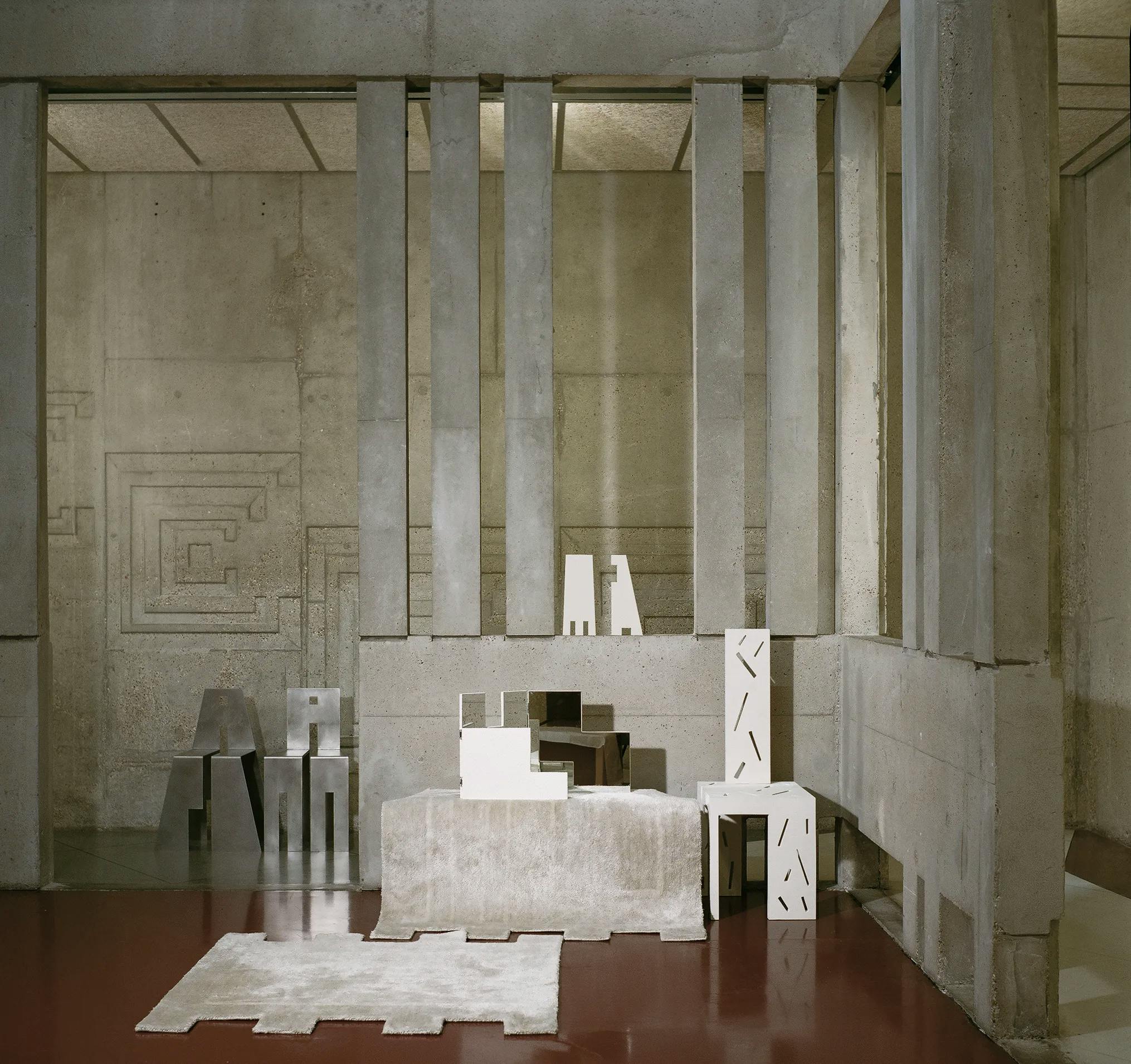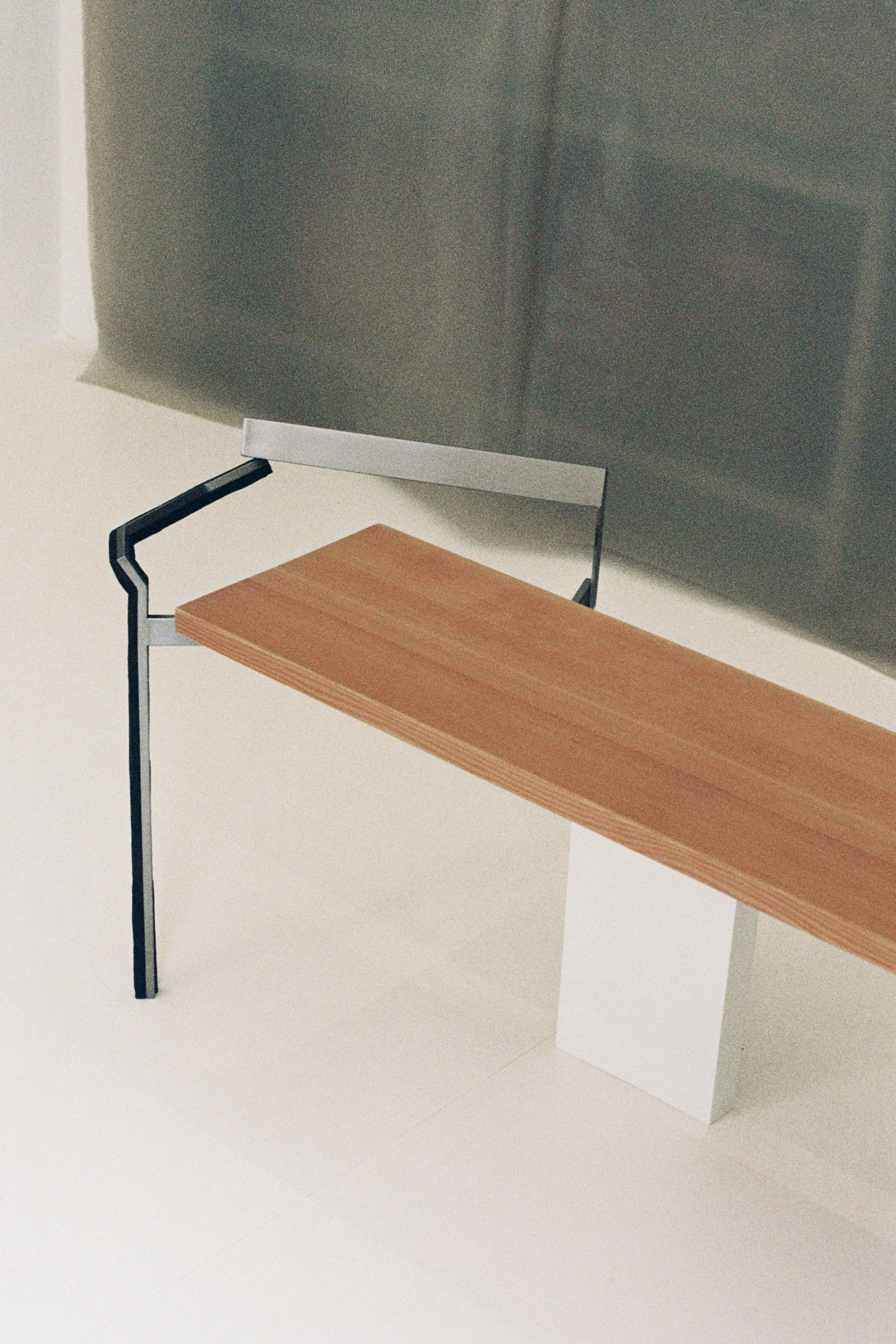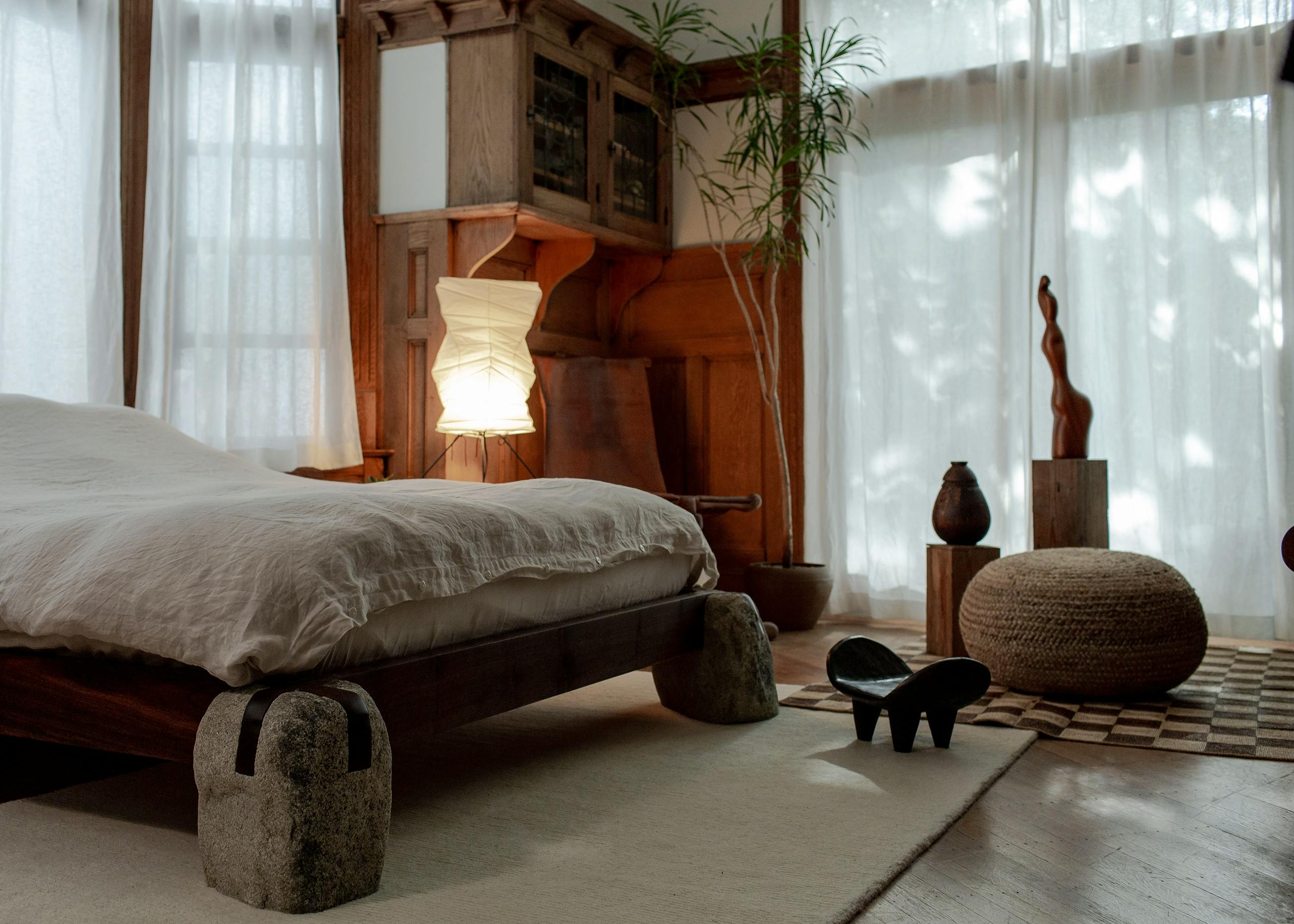
Kim Mupangilaï
Inspired by her own heritage and roots, Kim Mupangilaï’s work is reflective of merging cultures. She aims to bring a unique perspective and insight that encourages fresh discourse within the design world and beyond.

Kim Mupangilaï (she/her) is a Belgium-born, New York-based Interior Architect and Designer.
Inspired by her own heritage and roots, Kim’s work is reflective of merging cultures. She aims to bring a unique perspective and insight that encourages fresh discourse within the design world and beyond.
She received her Bachelor’s in Graphic Design and her Master’s in Interior Architecture at the LUCA School of Arts/KU Leuven in Belgium before moving to New York in 2018, where she currently resides.Kim has worked on multiple interior projects before directing focus on her very first furniture series.
Her debut piece was most recently displayed at Miami Design Week 2022, and she has also been featured on the cover of Milk Decoration Magazine (2021) and Sabato Magazine (2022), AD Germany, Coveteur, Marie Claire, De Morgen, Artnet and Harper’s Bazaar (May 2023).
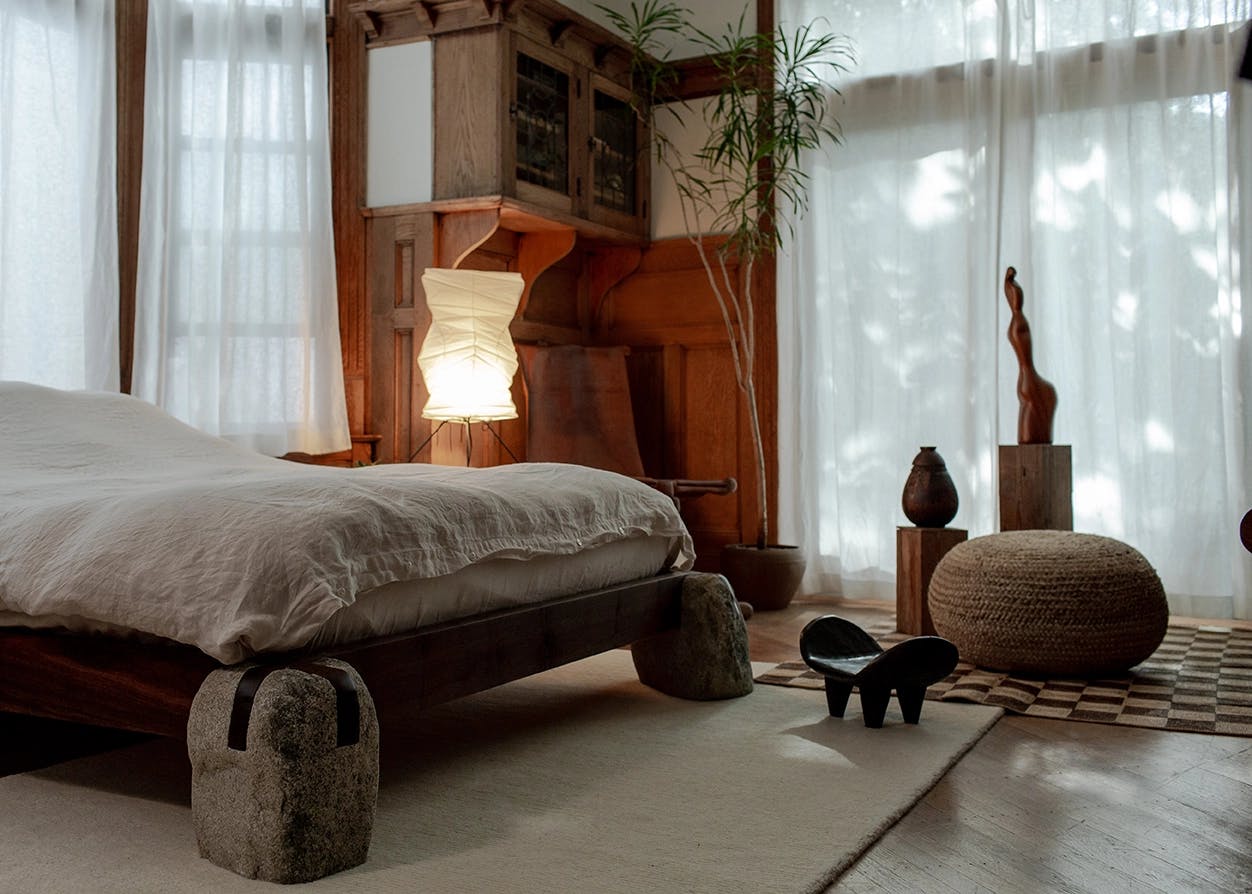

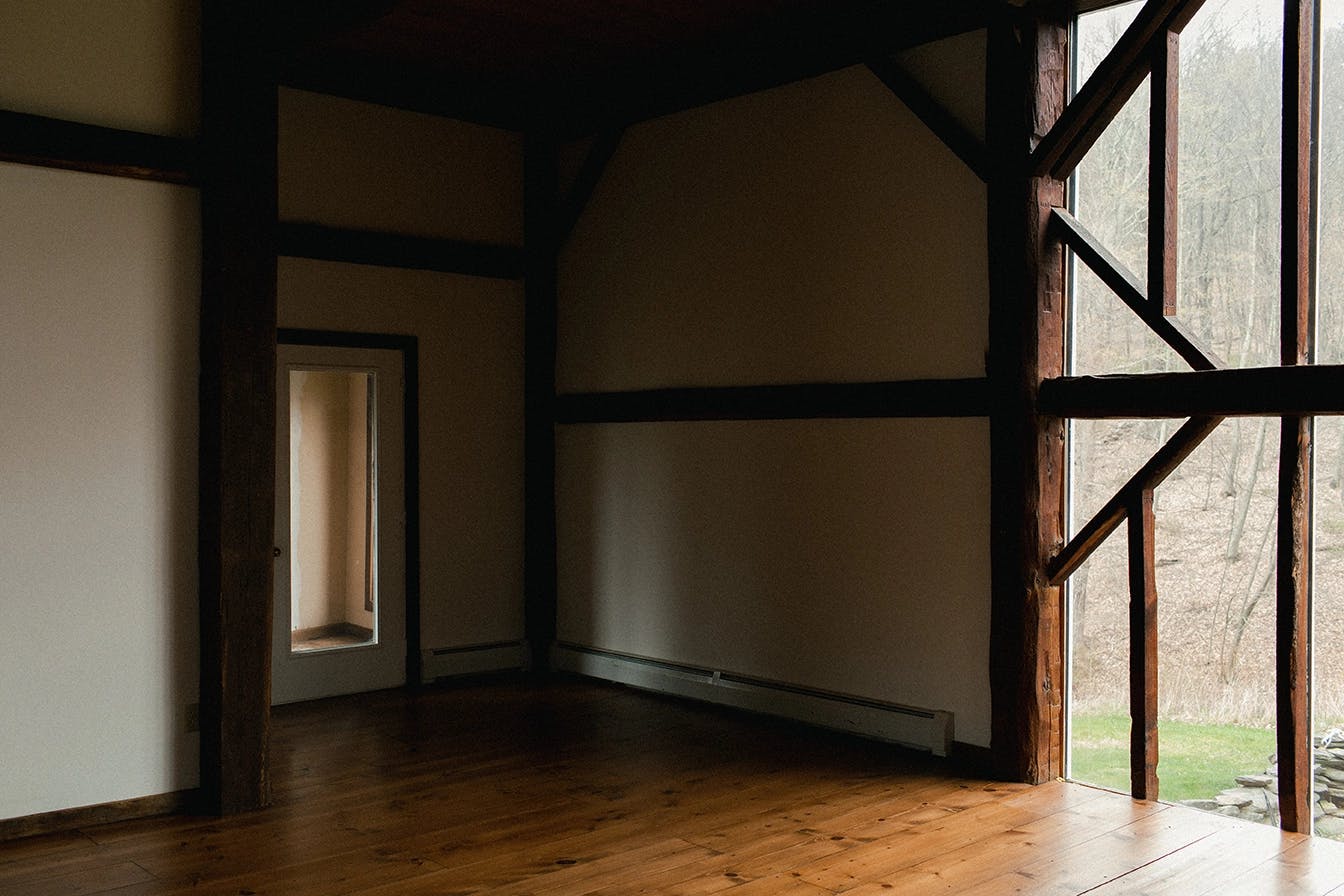

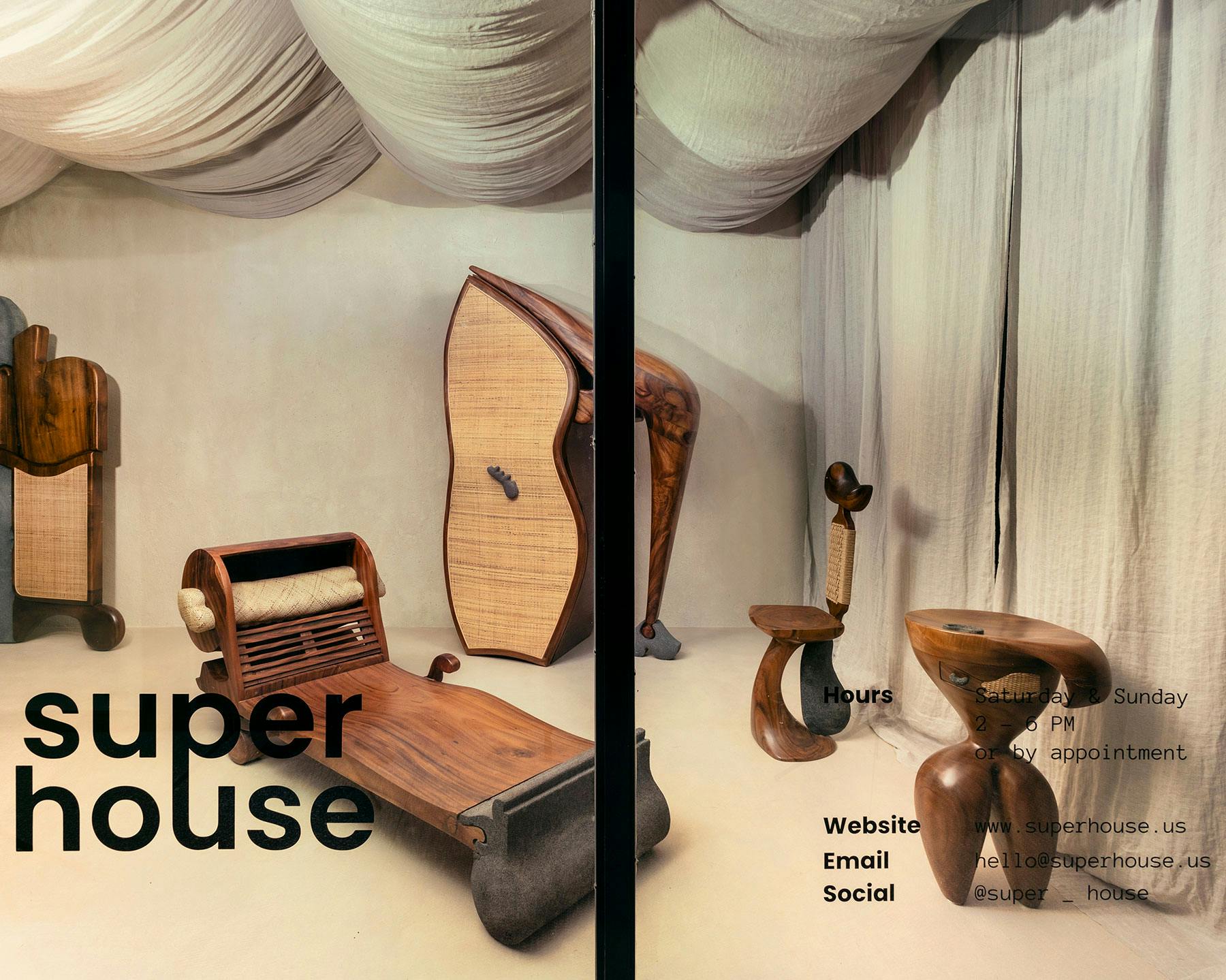
“GrowingupinasmalltowninBelgiumwithaBelgianmotherandCongolesefather,itbecamemynaturalinstincttoblendinwiththe Westernculturesurroundedme.Thisresultedinneverfullyunderstandingnorfindingmyidentity.Therefore,Iperceiveeverypieceinthecollectionasapersonalcross-culturalexperience.”
Kim Mupangilaï
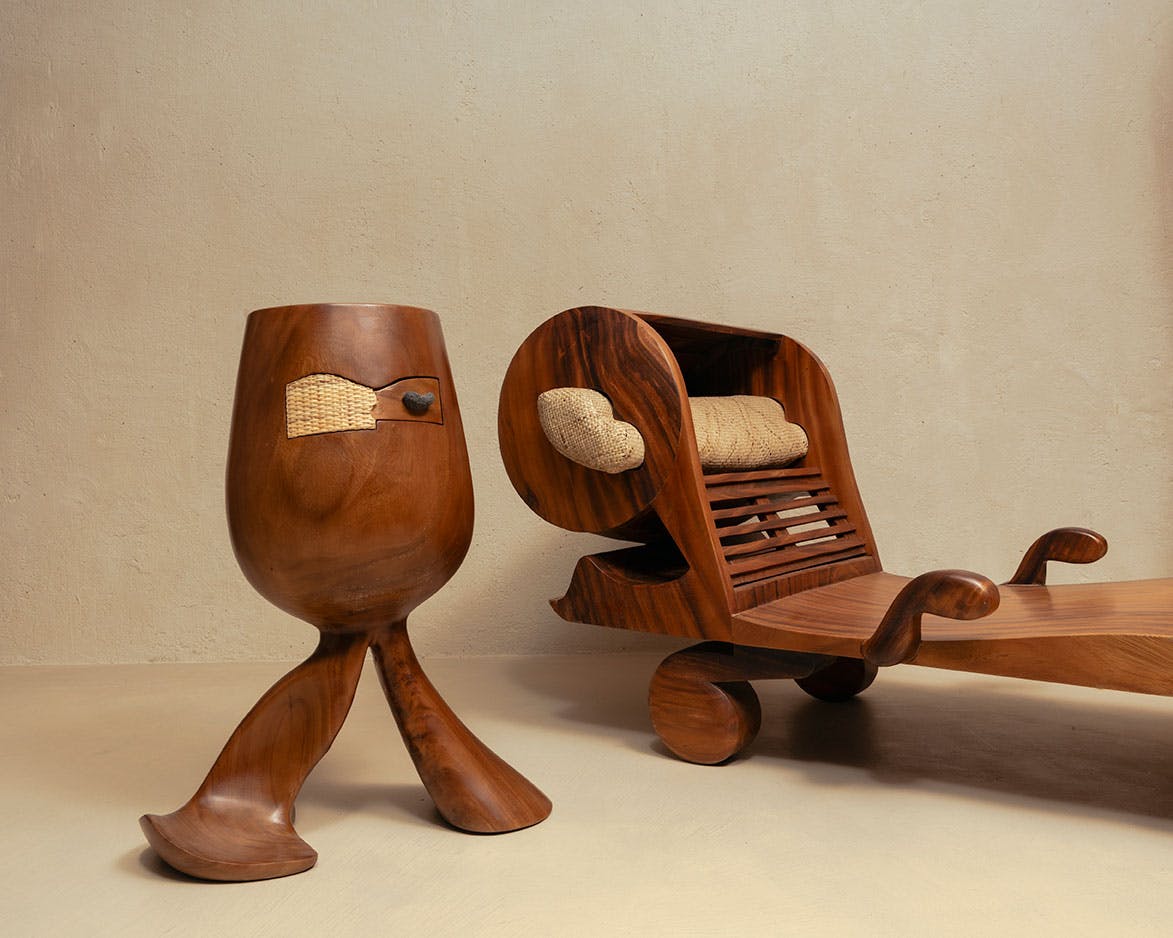
HUE/AM/I - HUE/I/AM Solo Exhibition at Super House Gallery
The term Hue in the show’s title is a reference to skin tone, a nod to Mupangilaï’s family background. Born to a Belgian mother and Congolese father, Mupangilaï was raised in Europe, losing contact with her African heritage. With her furniture collection, Kasaï, she rediscovers her cross-cultural identity and hopes to provoke viewers’ exploration of their own lineages.
The collection consists of seven furniture forms made from natural materials – teak, stone, rattan, and banana fibre – all symbolic of the Democratic Republic of Congo. Rattan is traditionally found in baskets, rugs, and textiles, while banana fibre is a reference to the banana leaves commonly used for cooking, serving, and food preservation. The teak and stone speak to the rich natural resources of the country.
Hand-working these materials into domestic furnishings with exaggerated curves, Mupangilaï establishes her sensuous and playful visual language. Two terms that appear in the titles of each piece are MSWASI, meaning woman, and BINA, meaning dance. Thus, ideas of femininity, place, history, and culture, are reverently explored by the designer. The resulting collection is at once sumptuous and introspective.






































